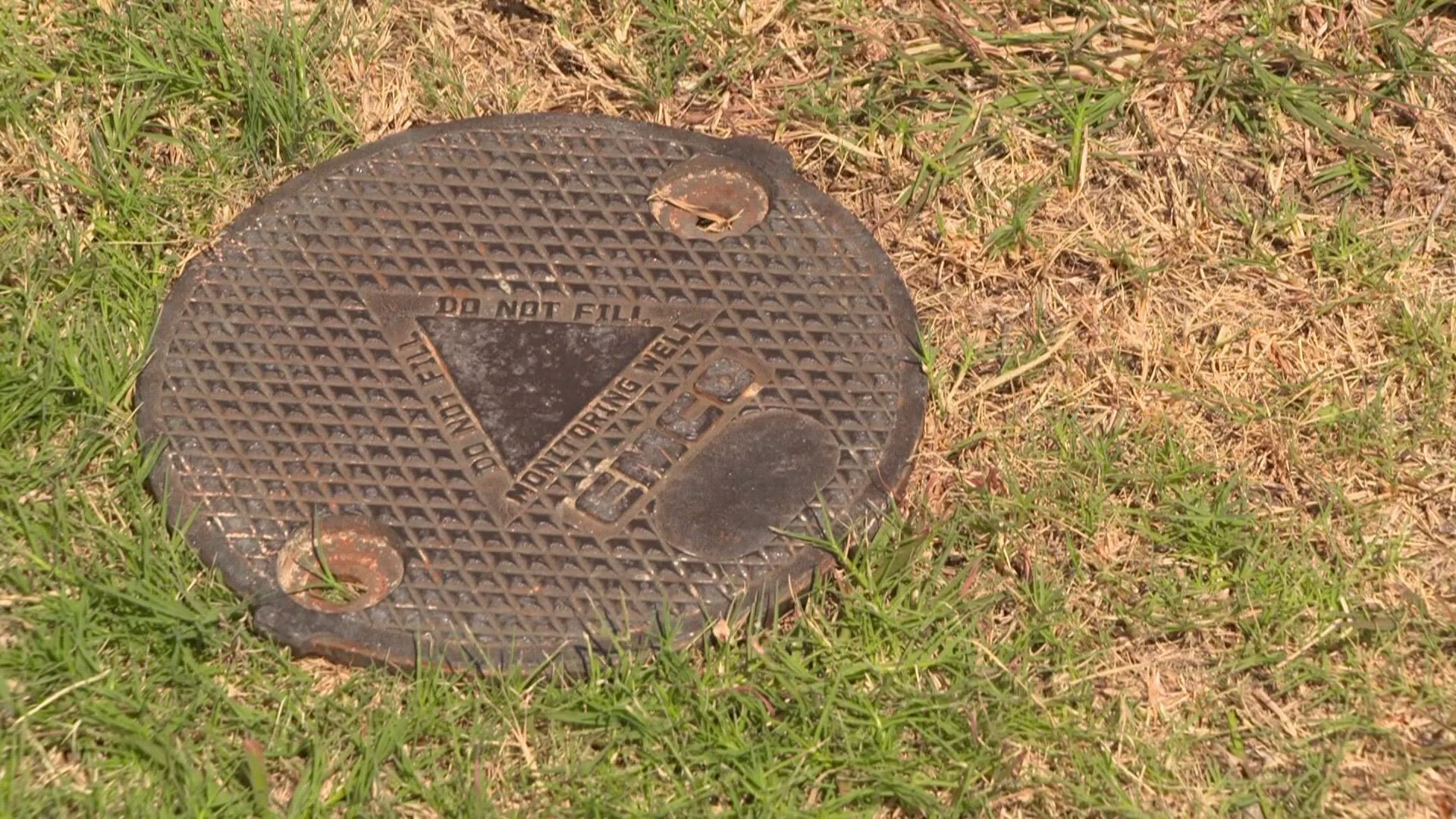GRAND PRAIRIE, Texas — Members from the Environmental Protection Agency, the Texas Commission on Environmental Quality, and the city of Grand Prairie addressed concerns from residents on Thursday, laying out a plan to eliminate a toxic groundwater plume that's lurked beneath them for years.
That plume, filled with trichloroethylene, has been a primary concern for the state and the EPA. Trichloroethylene can cause cancer, birth defects and impact vital organs like your kidneys and liver.
According to the EPA, it can also damage the respiratory, central nervous and immune systems.
The culprit of the plume is the Delfasco Forge facility. This North Texas defense contractor operated at the corner of Main Street and Northeast 28th Street as a munitions manufacturing and forge operation since the 1950s. The company stopped its operations in 1998, per the city of Grand Prairie.


At one time, Delfasco Forge helped make practice bombs and other machinery for the military and used trichloroethylene to clean its machines.
Over time, the chemical seeped into the soil, contaminating the groundwater beneath it.
The groundwater plume, which covers several streets and neighborhood blocks, sits underneath about 80 homes in the Burbank Gardens neighborhood, predominantly filled with low-income families. Many of them are Latino and don't speak English.
That creates an issue when a city, state and the EPA must get the word out about a polluted location requiring a long-term response to clean up hazardous materials.
In 2018, the Delfasco Forge was deemed a Superfund site, as stated above.
But that took time.
The EPA Resource Conservation and Recovery Act program conducted a vapor intrusion investigation of the neighborhood in 2008, sampling sub-slabs, crawl spaces, and indoor air in 16 homes and two commercial structures.
Ten of the 18 structures had measurable levels of trichloroethylene in indoor air. In July 2008, the owners of Delfasco Forge filed for bankruptcy.
Money from the bankruptcy settlement helped pay for vapor cleaners that purify the air in residents' homes.
The EPA believes that the plume doesn't impact water from the tap -- only water from wells in the area. It's okay to use well water for irrigation but not for consumption or cooking.
Vapor intrusion is the EPA's primary concern, the contaminated plume evaporating and entering people's homes.
Residents have been restless waiting for a solution, but the timetable for one takes time.
Hope Schroeder, an EPA remedial project manager, told WFAA cleaning up a Superfund site can take decades, depending on the pollution.
In the case of the Delfasco Forge, a possible sitewide solution has been tested and will be implemented more.
Approved last month, Schroeder said that the EPA will start using 'PlumeStop' on the affected groundwater, liquid-activated carbon that would filter and purify it.
If that treatment isn't successful, Schroeder said the EPA would do soil vacuum extraction. It seems ridiculous, but it's exactly as it sounds.
A device would be placed into the ground and suck out all the vapors while the soil stays in place. The difficulty would be getting access to the entire plume, which many residential properties cover.
But if either is a sitewide solution, the toxic groundwater plume could be quickly eradicated.
Schroeder said cleanup would be complete in two to three years in the best-case scenario.

